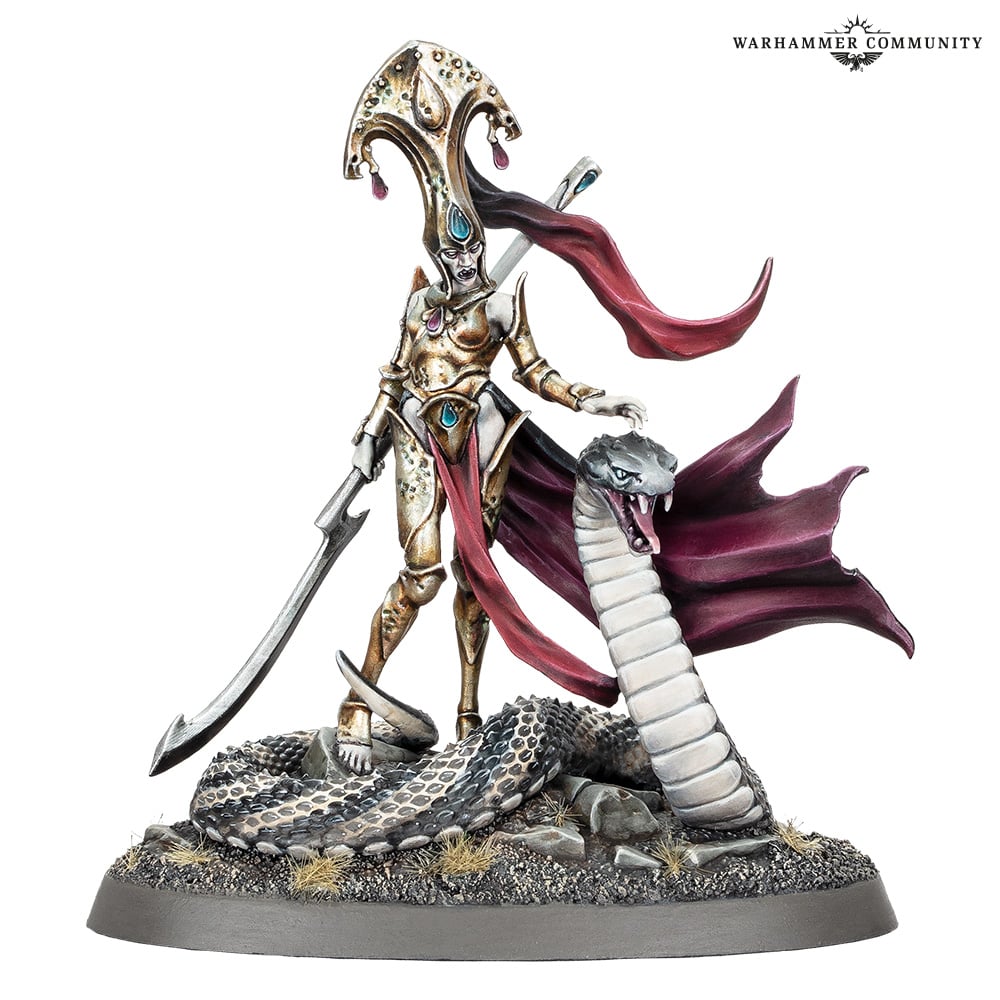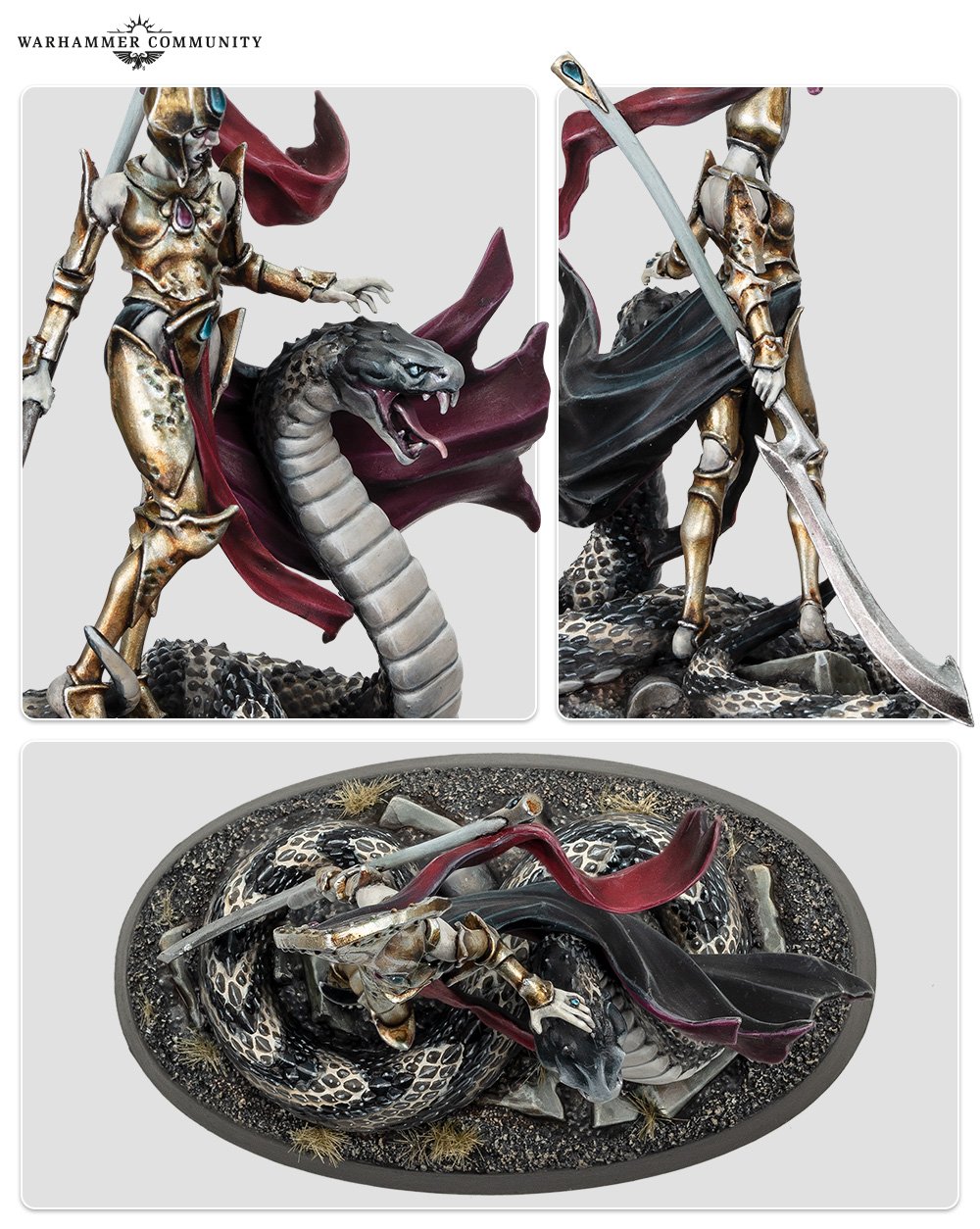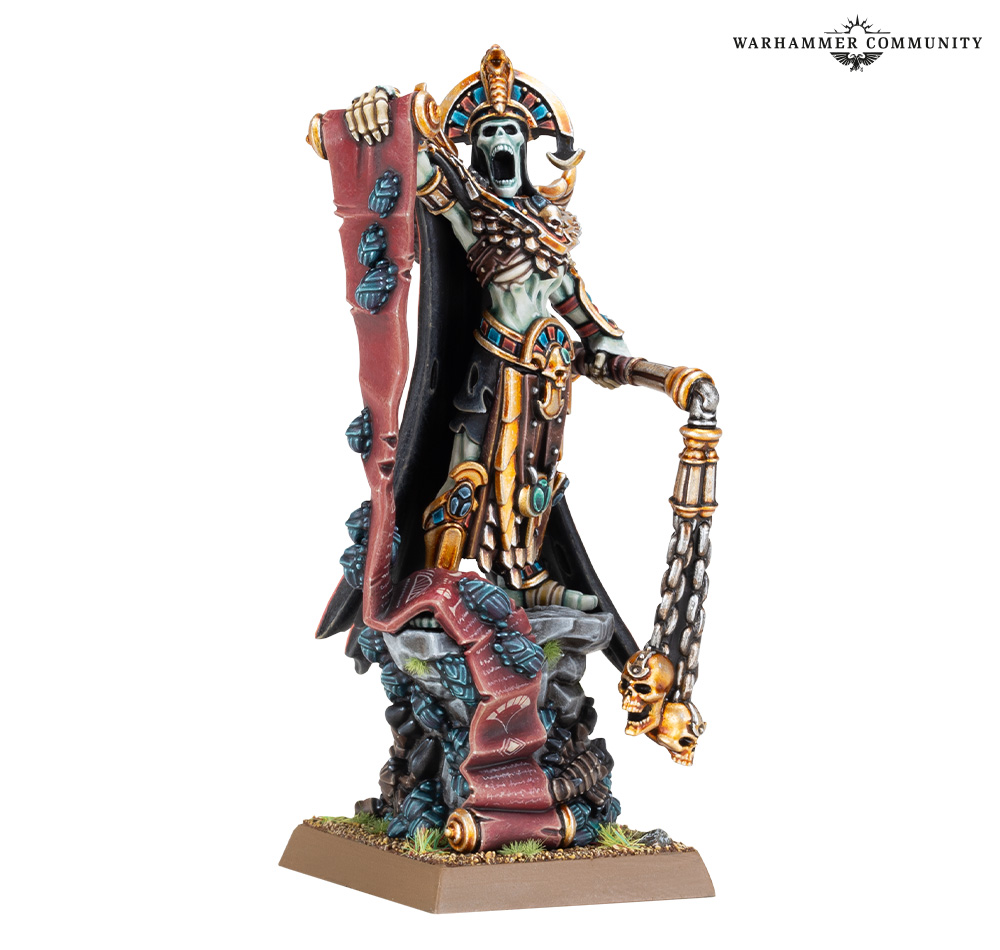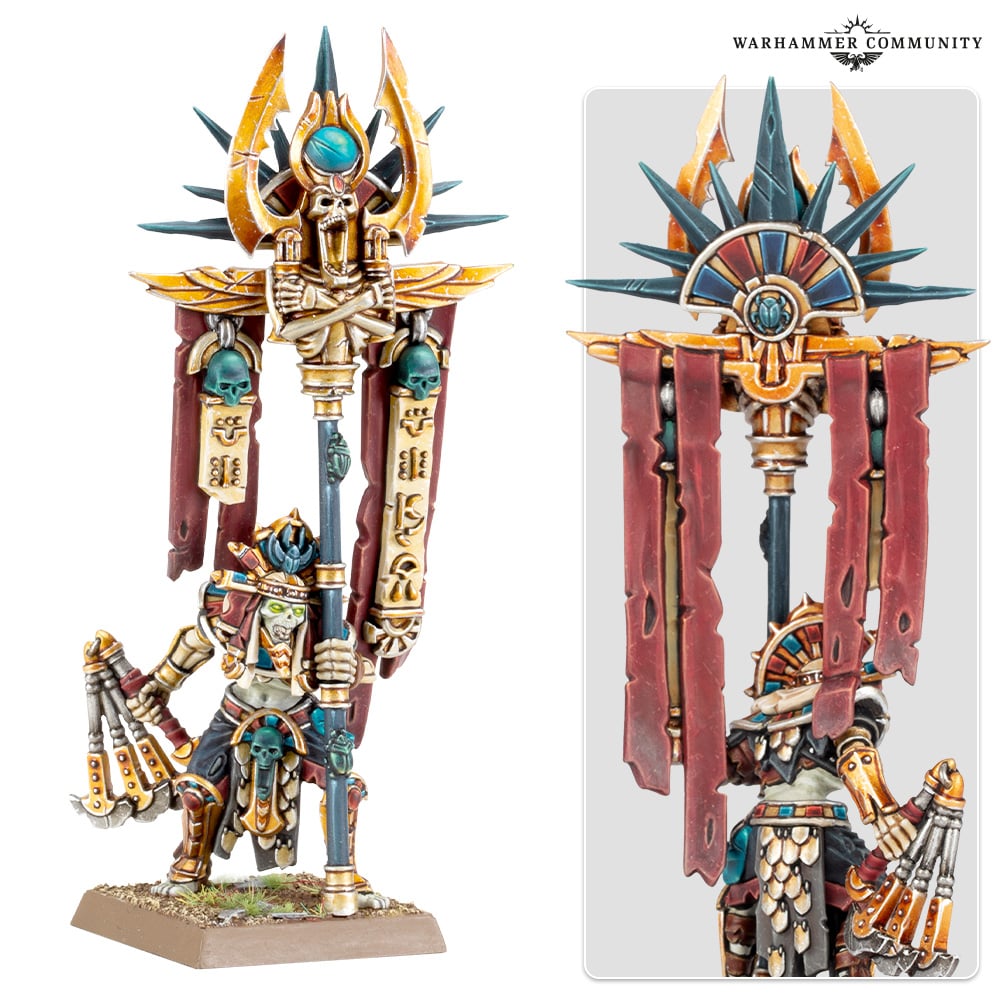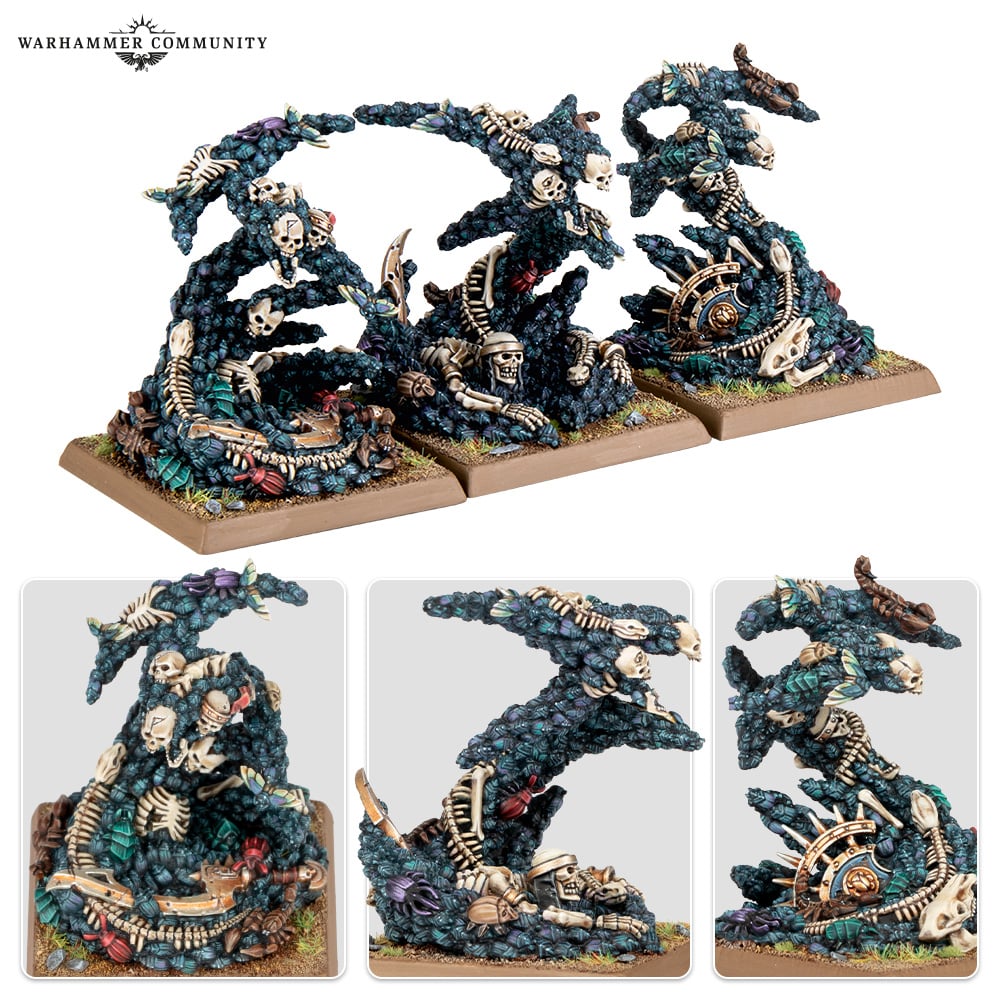Kharadron Overlords
Soulboundplayer
Brutal Kunnin' Smasha Cunning Brutes
- Pronouns
- He/Him
 They come from grim and glowering clouds, their aethermatic guns blazing. In a storm of fire, the ground is torn to furrows, and the enemy ranks are flung as if by invisible hands.
They come from grim and glowering clouds, their aethermatic guns blazing. In a storm of fire, the ground is torn to furrows, and the enemy ranks are flung as if by invisible hands. The Kharadron are called godless, for they care not for placing their destinies in the hands of another. Those deities they once held most precious abandoned them when they were needed the most.
Now, they put their faith instead in cold, certain metal, harnessing the material world for every iota of advantage it can give them to survive, the ever-hostile reaches of the Mortal Realms leaving them no other choice.
Having also been inspired by the awesome FEC-reveals, I've decided to make another bit of effortposting about a faction that I've always found fascinating, but who have been sorta out of the spotlight recently, the Kharadron Overlords!
Who are the Kharadron Overlords?



 Street-view from Barak-Mhornar, an aether-rig in a charging station, a battle against the forces of Death, and a Grundstok Gunnery Sergeant with a customary drillbill aether-familiar
Street-view from Barak-Mhornar, an aether-rig in a charging station, a battle against the forces of Death, and a Grundstok Gunnery Sergeant with a customary drillbill aether-familiarThe Kharadron are by a fairly decent margin the most technologically developed faction in the Mortal Realms. The dispossessed duardin of the Ironweld Arsenal come close in craftsmanship, but work from a less developed technological base, and the Skaven come close in terms of advanced engineering, but are significantly lacking in terms of reliability, reproducibility, and user survivability. The secret of the sky-duardin's technological aptitude is found in Aether-Gold, a miraculous lighter-than-air mineral that works as an incredibly powerful fuel substance and is found abundant in all the skies of the Realms, coupled with the fact that when their very own gods abandoned them so they had no other choice but to feed the spark of inventiveness that had always existed in the duardin soul until it grew into a fire burning so hot that it melted their self-imposed fetters of tradition.
Trade and legalities
The Kharadron are also one of the most mercantile factions in the setting, and it is often noted that for all their very impressive and powerful guns, their most powerful weapon by far is their trade. Their air fleets allow them mobility and transportation logistics options that easily beats out every other faction on larger scales, and they only really loose to a few of the most massive realmgates around such as the one between Hammerhal Aqsha and Ghyra, which are extremely rare. Even so, the Kharadron are also prolific users of realmgates, but they have the massive advantage of being able to use naturally occuring realmgates in the skies known as the skypaths, which most other factions simply can't reach.
They are also a very legalistic society. While the Kharadron are overall less considered with the spirit of oaths than other duardin of the realms, they are just as adamant as their cousin that a contract (or oat) will be fulfilled to the letter, even if it would cost them personally. The rules that guide their entire society can be found in the Kharadron Code, the common law of all Skyports, famously the longest and most complex legal document in all the Realms. Naturally, GW almost assuredly hasn't bothered to make a full version of it, but various authors have written bits and pieces, some more humorous than others. The Code itself comes from the earliest days of the Kharadron's existence after they had taken to the skies. At that time, each proto-skyport was a city alone, and so fierce was the competition amongst them for resources that war seemed almost inevitable. However cooler heads prevailed at the Conference of Madralta where an agreement amongst them was ultimately hammered out, and what was put to paper that day eventually became the Code as it is known now.
They are also a very legalistic society. While the Kharadron are overall less considered with the spirit of oaths than other duardin of the realms, they are just as adamant as their cousin that a contract (or oat) will be fulfilled to the letter, even if it would cost them personally. The rules that guide their entire society can be found in the Kharadron Code, the common law of all Skyports, famously the longest and most complex legal document in all the Realms. Naturally, GW almost assuredly hasn't bothered to make a full version of it, but various authors have written bits and pieces, some more humorous than others. The Code itself comes from the earliest days of the Kharadron's existence after they had taken to the skies. At that time, each proto-skyport was a city alone, and so fierce was the competition amongst them for resources that war seemed almost inevitable. However cooler heads prevailed at the Conference of Madralta where an agreement amongst them was ultimately hammered out, and what was put to paper that day eventually became the Code as it is known now.
Artycle 1 - The Rules of Governance
- Point 1: Leaders shall be chosen by proof of skills. No title of nobility shall be granted by the Kharadron Overlords. Titles and ranks are earned by mehret.
- Point 1: An act that does not make profit or lead to eventual profit is not worth doing.
- Point 26: If in the pursuit of duty, a captain encounters a threat that might impact the financial or physical well-being of their shareholders, they are expected to respond with all reasonable force. Any external entity that threatens the accumulation of profit should be subjected to immediate destruction.
- Footnote 21: Make fair use of all the gold in the sky.
- Sub-clause 12: During an active state of war immediate sanctions shall be imposed upon the enemies of the Kharadron Overlords, the severity of which is to be decided by the Geldraad. As long as the enemy draws breath, they shall be subject to a total trade embargo, and any officer of the fleet who attempts to open negotiations with such a party shall be considered guilty of the highest treason and punished accordingly.
- Amendment 3, Footnote 16 Representatives of the uzkulrik (Ossiarch Bone-Reapers) clearly cannot be considered subject to be second stipulation of Sub-clause 12 of Artycle 2, as they do not breathe.
- Point 1: The profit margin must be evaluated before the deployment of sky-fleet assets.
- Point 2: Upkeep of a skyvessel is essential, even over Kharadron lives.
- Point 5: All hazkal (ale) brewed within a sky-port is subject to regular inspection, to be carried out by the Board of Brewmasters. Any guild-company found guilty of thinning their product with bilgewater, using inferior hops or failing to allow appropriate fermentation time shall be fined to the full extent that the Code permits, and its owners de-bearded and branded with the mark of the guzungrim.
- Amendment 21. Footnote 6: Brewing stations located within the high airs cannot be subject to point five of this artycle. In addition, the sale of inferior hazkal within foreign ports shall be permitted, because the umgi (Humans) are content to drink any old swill.
- Sub-Amendment 327B: In Order to prevent the integrity of the Code against further frivolous and mendacious alterations that undermine the grand tradition of this constitution, no further sub-amendment regarding Artycle 7 shall be brought before the Geldraad.
The Kharadron Skyports and their government

 Barak-Nar from the outside, and Barak-Nar dealing with a misplaced har-kraken
Barak-Nar from the outside, and Barak-Nar dealing with a misplaced har-krakenBarak-Nar, 215,435,009 shares, 5 representatives: The oldest succesful skyport, they are pragmatists to the last pouring vast investments into any technology that can give them an edge, and they were the first to manage trade deals with the free peoples when the gates of Azyr opened.
Barak-Ziflin, 164,433,198 shares, 4 representatives: Producing the most skilled pilots out of all the ports, they have managed to become the second richest thanks to the vast amount of new markets they have managed to open up and corner.
Barak-Mhornar, 73,134,633 shares, 3 representatives: Of the six great skyports, only they have forsaken Chamon to instead make their home in Ulgu. Considered at best to be scoundrels and lowlifes, and at worst outright pirates, there are no Kharadron better at exploiting every loophole and rules lawyering unclear wording in the Code, to the degree that much of its complexity are specific countermeasures to them.
Barak-Zon, 36,284,111 shares, 2 representatives: Floating so high in the skies that it is hard to walk the streets without breathing apparatus', they're the most militaristic of the skyports, placing almost as much importance on martial prowess as they do profit.
Barak-Urbaz, 26,036,198 shares, 2 representatives: Whereas the other skyports still retain some of the famed duardin insularity, Barak-Urbaz truly welcomes all in the name of profit, making sure to fleece them for every last scrap they own on their great markets as there are few traders wilier or better versed in the Code aruond. They've also got a big chunk of the sky-fish economy cornered.
Barak-Thryng, 12,890,133, 2 representatives: The poorest of the six ports, they are very conservative by Kharadron standards as they insist on only using old and proven technology instead of skipping lab research to go directly to field-testing. Being the only major port where worship of the Duardin Ancestor Gods is still common, they have seen their total fortunes risen with some 1400 % recently coinciding with the return of Grungni to the Mortal Realms.
Kharadron, the gods, and magic
The vast majority of Kharadron are not atheist, for they are very much aware that the gods exist and are actively involving themselves in the happening of the Mortal Realms, because their civilization has physically met and treated with them. Likewise they don't deny that magic exists, as some of their trading partners are very capable of of conjuring fireballs or raising the dead. However, a simple acceptance of such facts and wary respect for those who are powerful in such matters is all that the Kharadron will afford them, for it is so ingrained in their culture that it was duardin ingenuity and resilience that saw them through the Age of Chaos that most think themselves above civilizational crutches like gods and magic. There are outliers of course, such as Barak-Thryng mentioned above were the old ways of worship are still honoured, and even in the other skyports the Ancestor Gods still feature a lot in their cultural heritage and aesthetics.
As for magic, the Kharadron stringently maintain that aether-gold and their aethermatic sciences are most certainly not magic, just good old engineering and chemistry based on an incredibly useful but still natural material. On occasions where mages from other factions witness this science it has been noted that it gives off a very similar feel to magic, but it is a rather touchy subject to bring up and with Kharadron society being extremely reluctant to give up even the slightest of their technological advantages, opportunities for studying and confirming such hyphoteses are very rare. One notable exception to the Kharadron's magic aversion is the famed "spell in a bottle"-device created by the Aether-Khemists Guild. It consists of a bottle, containing a spell that has been aethermatically transmuted into a gas, and once the bottle is shattered the spell gets unleashed. Originally devised as a way to deal with rampaging endless spells, some enterprising duardin were quick to see its potential applications in battle.
As for magic, the Kharadron stringently maintain that aether-gold and their aethermatic sciences are most certainly not magic, just good old engineering and chemistry based on an incredibly useful but still natural material. On occasions where mages from other factions witness this science it has been noted that it gives off a very similar feel to magic, but it is a rather touchy subject to bring up and with Kharadron society being extremely reluctant to give up even the slightest of their technological advantages, opportunities for studying and confirming such hyphoteses are very rare. One notable exception to the Kharadron's magic aversion is the famed "spell in a bottle"-device created by the Aether-Khemists Guild. It consists of a bottle, containing a spell that has been aethermatically transmuted into a gas, and once the bottle is shattered the spell gets unleashed. Originally devised as a way to deal with rampaging endless spells, some enterprising duardin were quick to see its potential applications in battle.
Members of the Kharadron


A Kharadron admiral of Barak-Nar and captain Drekki Flynt of Barak-Mhornar, the Codewright lacks decent art
Kharadron Captains don't have a model, except technically Drekki Flynt who is a Captain though by all accounts not exactly a standard one, but they are the rung below an admiral and play much of the same role, only with their own personal ship rather than a whole fleet. All ships need a captain, and save for the admiralty their orders are what goes on the ship. However should they be found wanting by not making enough profit, the crew can call a vote of no confidence "Khrenka Gorogna" and depose them, choosing a new captain from amongst themselves. This is very rare however, for as profit-focused as the Kharadron are, spending years together through both happiness and sadness, thick and thin, creates bonds of camaraderie and loyalty that can easily rival those of family.
Codewrights are to lawyers what actual lawyers are to bad police-procedural lawyers. Most of them possessing a near-eidetic memory of every rule and regulation of the code both accepted and proposed, few others truly comprehend the Code as deeply as they. Any captain is grateful to have one of these legal wizards on the team as it sees their ship's profit margin increasing sharply, whether by finding loopholes regarding resource extraction and salvage, or how to set up the most effective tax schemes to pay as little as possible. They generally try to stay out of battle, but in a pinch these rules-lawyers hefty books on rules and lawyering them can also be used to crack a skull or two.




An Aether-Navigator, an Aether-Khemist, an Endrinmaster with an aethermight hammer and another with a dirigible suit
Endrinmasters are top members of the Endrineers Guild, responsible for the upkeep and repair of the Kharadron's ship both in and out of combat. There are few minds in the Realms so technologically adept, with an almost instinctual understanding of which parts of the machine are under stress, needs to be repaired, or can be counted on to hold out just long enough for the ship to survive. They have dozens and dozens of tools available to fulfill their jobs, and while they're certainly no strangers to using percussive maintenance on unruly engines they don't mind employing their endrinharness exoskeletons to give enemies a bit of percussive action with their massive aethermight hammers either. Alternatively, they can put on a dirigible suit with mechanical arms and throw themselves into the air to take flight on their personal aether-endrin to get at those damages on the ship that are just too hard to reach otherwise.
Aether-Khemists are the undisputed masters of aether-gold, members of the Aether-Khemists Guild and a vital part of Kharadron society. Trained to the degree that they can estimate the purity of an aether-gold seam by just smelling a sample, an aether-khemist on a ship uses their measurement tools to find every last sliver of hidden aether-deposits. When battle comes, they can use their Athmospheric Anatomizer gas sucking machines to create a small vacuum area where enemies choke to death, or reverse the flow, spraying them with concentrated aether-gold which is so caustic that it will instantly melt flesh from bone. By reworking some settings, they can also coat their allies in a fine aether-gold mist which has the effect of supercharging Kharadron weaponry, increasing their power and rate of fire.



The common arkanaut, a sky-warden, the endrinrigger doesn't get a picture because it just looks like an dirigible endrinmaster without the mechanical arms, and a grundstok thunderer firing upon a bloodreaver
The Skywarden is a specialist arkanaut, endowed with the power of flight thanks to their personal-use endrin. Their high mobility allows them to act as shock troops or close range defenders of their ship. Their piston-powered skypikes pack enough of a punch to go straight through armoured hull, and their vulcaniser pistols fires beams of superheated aether which shear through armour as if it were wax.
Whereas an endrinmaster is worth more than their own weight in aether-gold, and the prices of their services reflect that fact, their junior endrinrigger guild members are more open to negotiations where experience is at least part of their salary. It's therefore not unheard of to see them as part of crews that can't quite justify the expense of a master of the guild, though they also make for great support in larger fleets where the endrinmaster simply can't be everywhere at once. Swooping around with personal aether-endrins much like the skywardens, they use their aethermatic saws and rivet-guns to conduct emergency field repairs, as even though they are not quite at the levels of an endrinmaster they are still adept mechanics.
The Grundstok Thunderers trade the versatile marine/sailor training of arkanaut companies for heavier armour, heavier arms, and more combat drills. Professional firing lines for hire, each one is drilled to become a crack shot fully in synch with their fellow thunderers, allowing them to keep up their iconic staggered volleys, ensuring relentless pressure on the enemy. Most wield an aethershot rifle which packs a significant punch making it ideal at both medium and long range fire, but the secret of the thunderers successess in battle lies in combining different types of weapons. Once the enemy raises shields to protect against the aethershot, aetheric fumigator gas weapons are brought forth, choking them and burning their skin. If the enemy breaks into a charge to try and escape the caustic clouds, decksweeper shotguns shred their bodies to paste at close range. If the enemy tries to keep up tight formations to push through, they will instead quickly fall victim to the explosive power of mortar or aethercannon shot.
Their mighty fleets




A grundstok gunhauler, an arkanaut frigate, an arkanaut ironclad, and a khrundhal-class battleship flanked by frigates and ironclads.
The smallest ship commonly seen in lore and on tabletop is the Grundstok Gunhauler, a part of the forces of the Grundstok companies which lease them and their pilots out for large sums. A two-seater ship, the gunhauler is designed to be a fast and manoeuvrable escort ship that can both protect their charges against nimble flyers and go on the offensive as a mobile artillery-platform.
The Arkanaut Frigate is one of the most commonly seen ships around, and many are the famous captains and admirals who started their career on just such a ship. Designed to be practically self-sufficient save for fuel and rations, even during long journeys, the frigate strikes an excellent balance between speed, maneuverability, durability, cargo space, and cost of operations. As a result it has been widely adopted for almost all purposes imaginable, even warfare, as its turret mounts and cannons packs significantly more of a punch than what an unfamiliar observer would expect. Carrying a crew of 15 duardin, the sheer breadth of skills in such a group adds to its versatility and ensures that there are few situations it can't get out of.
The Arkanaut Ironclad is the largest ship making its appearance on the tabletop, and unlike the frigate, the ironclad has a design focuses on its combat ability first. Reminiscent of a flying fortress, it is somewhat slower and less mobile than the frigate, but the increased amount of swivel turrets, bombs, torpedoes, and cannons means it can deal with threats the frigate would rather avoid. Extrapolating from the frigate's crew complement, an Ironclad should be able to carry about 25 duardin.
Khrundhal-class Battleships are some of the most massive weapons around in the Mortal Realms, dwarfing Ironclads, loaded with enough weaponry to pretty much take out a small army alone. They are in fact so massive and expensive that building them and operating them straddles Artycle 2 Point 1 "An act that does not make profit or lead to eventual profit is not worth doing" even when they're mostly expected to just stay docked, but all the major skyports keep a few around for cases of extreme need.
Krontankers are some of the true giants of the ships the Kharadron use. Ten times the size of an ironclad, they are both fairly slow and relatively unarmed, their purpose to freight aether-gold in bulk from aether-seam to skyport.
Just to finish off
Thanks to their sky-bound isolation and incorporating necessary technical jargon into everyday practice, the Kharadron's language developed a decent into what is known as Kharadrid. They're generally still able to speak common Khazalid with other duardin, but it's noted that other duardin consider their accents and manner of speaking as rather curt and not very respectful.
Whaleens, air-krill, har-krakens, and megalofins are all animals one might encounter in the skies, and yes, they are exactly what they sound like.
The Kharadron seem to have rather well-established union movements, with a union for skyfarers such as arkanauts, a union for cloud-miners, and a union for dockworkers that we know of, though there's not a lot of information about what they do practically.
The exact lifespan of Kharadron duardin isn't really known. Soulbound puts duardin lifespans at about 200 years, but there's been more than one example in lore of duardin living significantly longer than that.
Aether-Gold can be processed completely pollution-less, though skyports are filled with more than enough other type of industries using regular chemicals and materials that there's a decent bit of pollution in them anyway. However, a large amount of pollution is taken by the winds and trails the skyport as it falls down on the lands below, which can cause significant crop death for farmers whose lands lie below the skyports path. That's not even to speak of Kharadron waste management mostly being about opening sewer chutes and drop the contents right out.
At least two different skyports have been fully taken over by grot sky pirates, Barak-Khazzar which is now known as Da Moon City, and Barak-Zaffar, which we don't really know anything about. Grot sky pirates overall seem to be a surprisingly prolific threat amongst the clouds. They aren't alone of course, the forces of tzeentch are fairly common, it's not unheard of for skaven to take to the skies either, and there's even the occasional orruk sky pirate mentioned.
Kharadron are fairly insular, and in many skyports non-kharadron aren't allowed in proper, relegated to staying in and conducting their business in the docklands. Despite this, it's possible for a captain to take on non-kharadron crew, as Drekki Flynt has both a dispossessed runemaster and an ogor maneater on his crew.
Kharadron economy is fairly unclear as they seemingly use aether-gold shares as their main unit of currency, but its value in relation to goods hasn't been expanded upon. According to the Grombrindal book, 1 million aether-gold shares is apparently enough to keep Barak-Nar in the air for half a year.
Despite doing away with many traditions, a good grudge is still respected by the Kharadron. Though it is equally framed by their Code as everything else they do, once a Kharadron has completed the proper and lawful procedures they are pretty much free to seek vengeance on their target at any cost.
The proud traditions of Bugman's beer is still carried on by the brewmaster general of the Bugman's Brewery Guild-Company, Jakobb Bugmansson XI, a descendent of Josef who proudly boasts that their famous XXXXXX brew is made using the original recipe from the world-that-was.
Whaleens, air-krill, har-krakens, and megalofins are all animals one might encounter in the skies, and yes, they are exactly what they sound like.
The Kharadron seem to have rather well-established union movements, with a union for skyfarers such as arkanauts, a union for cloud-miners, and a union for dockworkers that we know of, though there's not a lot of information about what they do practically.
The exact lifespan of Kharadron duardin isn't really known. Soulbound puts duardin lifespans at about 200 years, but there's been more than one example in lore of duardin living significantly longer than that.
Aether-Gold can be processed completely pollution-less, though skyports are filled with more than enough other type of industries using regular chemicals and materials that there's a decent bit of pollution in them anyway. However, a large amount of pollution is taken by the winds and trails the skyport as it falls down on the lands below, which can cause significant crop death for farmers whose lands lie below the skyports path. That's not even to speak of Kharadron waste management mostly being about opening sewer chutes and drop the contents right out.
At least two different skyports have been fully taken over by grot sky pirates, Barak-Khazzar which is now known as Da Moon City, and Barak-Zaffar, which we don't really know anything about. Grot sky pirates overall seem to be a surprisingly prolific threat amongst the clouds. They aren't alone of course, the forces of tzeentch are fairly common, it's not unheard of for skaven to take to the skies either, and there's even the occasional orruk sky pirate mentioned.
Kharadron are fairly insular, and in many skyports non-kharadron aren't allowed in proper, relegated to staying in and conducting their business in the docklands. Despite this, it's possible for a captain to take on non-kharadron crew, as Drekki Flynt has both a dispossessed runemaster and an ogor maneater on his crew.
Kharadron economy is fairly unclear as they seemingly use aether-gold shares as their main unit of currency, but its value in relation to goods hasn't been expanded upon. According to the Grombrindal book, 1 million aether-gold shares is apparently enough to keep Barak-Nar in the air for half a year.
Despite doing away with many traditions, a good grudge is still respected by the Kharadron. Though it is equally framed by their Code as everything else they do, once a Kharadron has completed the proper and lawful procedures they are pretty much free to seek vengeance on their target at any cost.
The proud traditions of Bugman's beer is still carried on by the brewmaster general of the Bugman's Brewery Guild-Company, Jakobb Bugmansson XI, a descendent of Josef who proudly boasts that their famous XXXXXX brew is made using the original recipe from the world-that-was.







